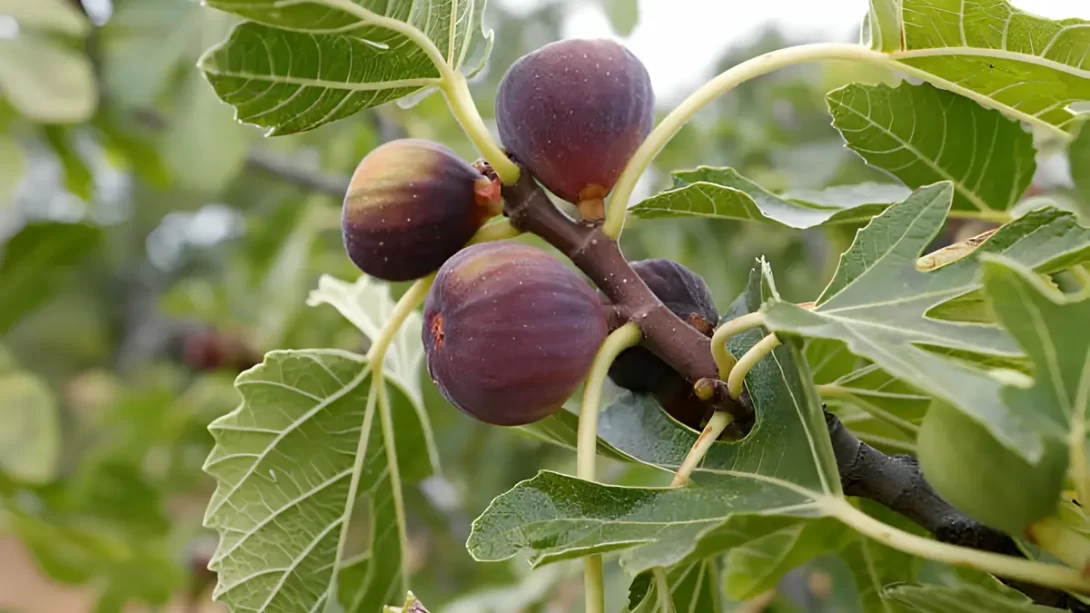Fig trees are cherished in gardens worldwide for their lush foliage and sweet fruits. Propagating fig trees is a rewarding process that allows gardeners to clone their favorite varieties. This method ensures that the new trees maintain the characteristics of the parent tree, something that’s particularly important for preserving the flavor and quality of the fruit. This article will guide you through the different methods of propagating fig trees, helping you expand your home orchard.
Fig Tree Varieties
There are several varieties of fig trees, each with unique characteristics. Popular varieties include ‘Brown Turkey’, known for its hardiness and robust flavor; ‘Celeste’, which produces sweet, small fruits; and ‘Mission’, famous for its dark, richly flavored figs. When choosing a variety for propagation, consider factors like climate adaptability, growth habit, and fruit type. Selecting a variety that thrives in your specific climate and soil conditions is crucial for successful propagation and fruit production.
Methods of Propagating Fig Trees
Fig trees can be propagated through various methods, including cuttings, air layering, and division. Propagation by cuttings is the most common and straightforward method, suitable for most gardeners. Air layering is a more advanced technique that involves rooting a part of the living tree while still attached to the parent plant. Division, while less common for fig trees, involves separating a part of the tree’s root system to grow a new plant. Each method has its advantages and considerations, which we will explore in detail.
Propagation by Cuttings
Propagating fig trees from cuttings involves several steps:
- Choosing and Preparing Cuttings: The ideal time for taking cuttings is during the dormant season, typically in late winter. Select healthy, mature branches from the previous year’s growth, about 6 to 8 inches long. Cuttings should have a few nodes (points where leaves attach) and be free of disease or damage.
- Rooting Cuttings: Plant the cuttings in a pot filled with a well-draining soil mix. Dipping the cut end in rooting hormone can enhance root development. Plant the cutting deep enough so that several nodes are buried, as roots will form from these nodes.
- Aftercare for Cuttings: Place the pot in a warm, bright location but out of direct sunlight. Keep the soil consistently moist but not waterlogged. Roots typically begin to form in a few weeks to a few months. Once the cuttings have developed a robust root system, they can be gradually acclimatized to outdoor conditions before transplanting into the garden.
Propagation by Air Layering
Air layering is a more advanced but highly effective method of propagating fig trees, particularly for larger or mature specimens.
- Process Explanation: This technique involves inducing a branch on the living tree to form roots before it is detached from the parent plant. It’s especially useful for propagating large branches or when cutting propagation is not successful.
- Step-by-Step Guide:
- Select a healthy branch and make a small upward cut about one-third into the branch, ideally just below a leaf node.
- Prop open the cut with a small piece of wood or toothpick to prevent it from healing.
- Apply rooting hormone to the cut.
- Surround the wounded area with moist sphagnum moss or a similar medium, and then wrap it with plastic wrap to retain moisture.
- Secure the plastic with tape above and below the moss to create a sealed environment.
- Check periodically for root development. This process can take several weeks to a few months.
- Once a healthy root system is visible, cut the branch below the rooted section and carefully remove the wrapping.
Propagation by Division
Division is less commonly used for fig trees but can be an option for certain types of figs, particularly those that produce suckers or offshoots.
- Identifying Suitable Trees: Look for fig trees that naturally produce suckers from their base or have a clumping growth habit.
- Instructions for Division:
- Carefully dig around the base of the sucker or offshoot to expose the roots.
- Using a sharp shovel or knife, separate the sucker from the main plant, ensuring it has a good portion of roots attached.
- Transplant the division into a pot with well-draining soil or directly into a prepared spot in the garden.
- Water the new plant thoroughly and maintain consistent moisture as it establishes.
Transplanting and Caring for Propagated Fig Trees
Once your propagated fig trees have developed a robust root system, they are ready to be transplanted into their permanent location. Choose a sunny spot with well-draining soil. Plant them at the same depth they were growing at in their pots, and water them well after planting. In the first year, focus on establishing the tree with regular watering and minimal fertilization. Pruning should be done cautiously to shape the tree and encourage a strong structure. Protect young trees from extreme temperatures and frost, especially in colder climates.
Troubleshooting Common Issues in Propagation
Even with careful attention, you may encounter some challenges while propagating fig trees. Poor root development in cuttings can often be linked to inadequate moisture, incorrect temperature, or the absence of rooting hormone. In the case of air layering, ensure the moss or medium remains moist and the plastic wrap is secure to maintain a humid environment. For divisions, stress to the plant can be minimized by ensuring a sufficient root system is attached and by transplanting immediately.
Disease and pest infestations can also affect propagation success. Keep an eye out for signs of distress, such as wilting, leaf discoloration, or unusual markings. Use appropriate fungicides or insecticides as needed, but always opt for organic or mild options to avoid harming the young plants.
Conclusion
Propagating fig trees can be a deeply satisfying aspect of gardening. Whether you choose cutting, air layering, or division, each method offers a unique way to increase your collection of these delightful trees. Not only does this process save you money, but it also allows you to share plants with fellow gardening enthusiasts. Growing fig trees from propagation also ensures that you can enjoy your favorite varieties for years to come. With patience and care, you can cultivate a thriving fig orchard, rich with sweet and delicious fruits.



